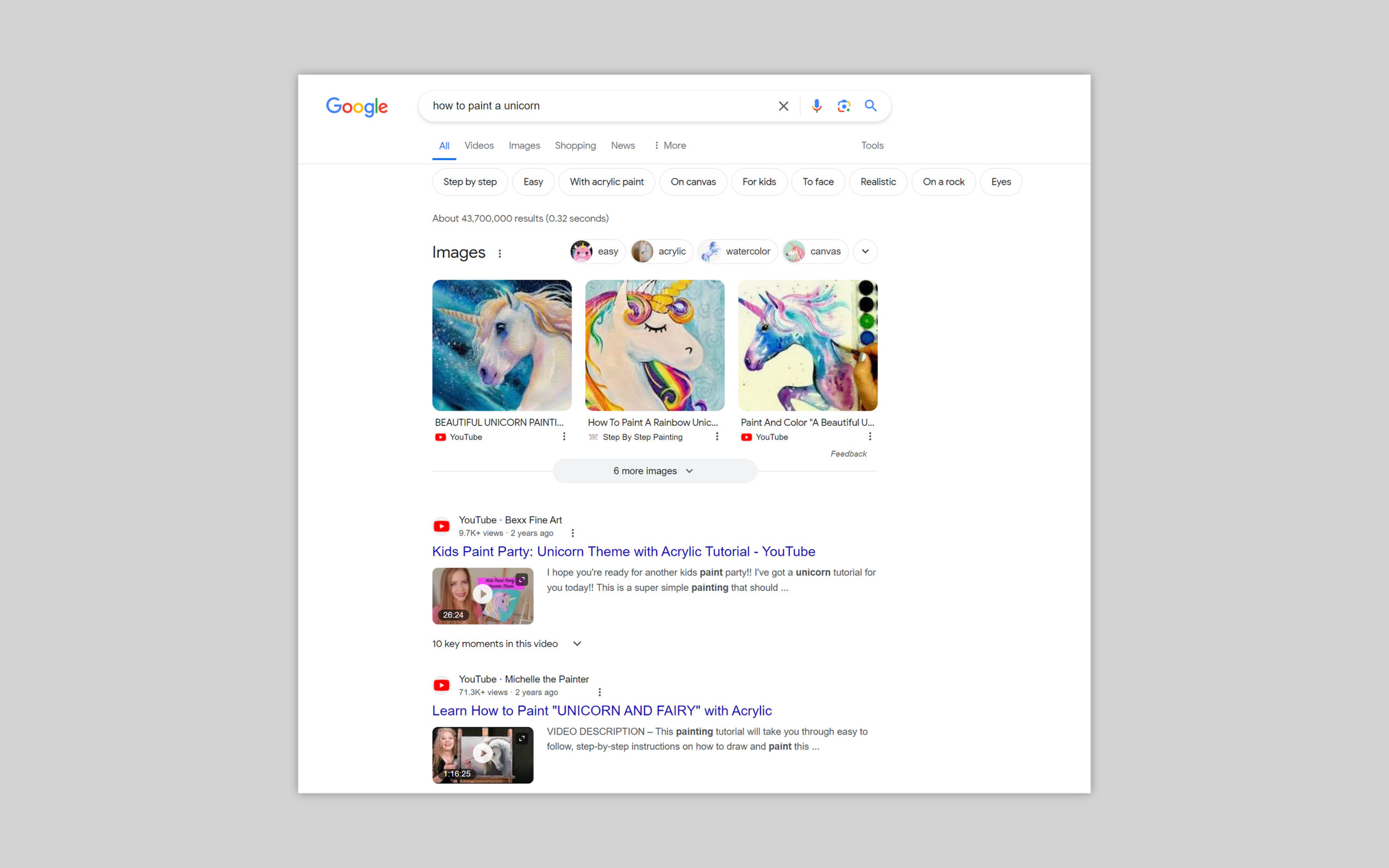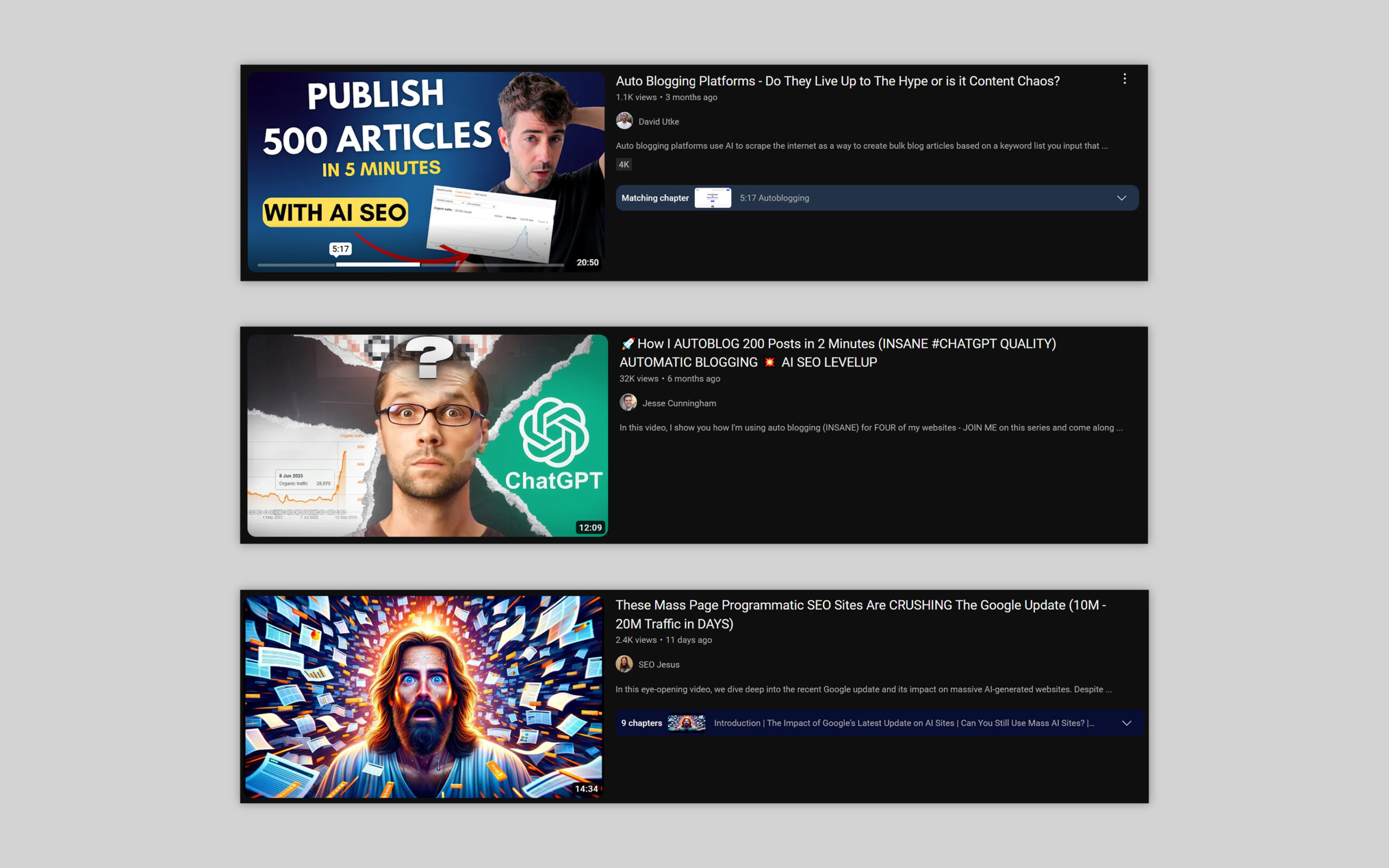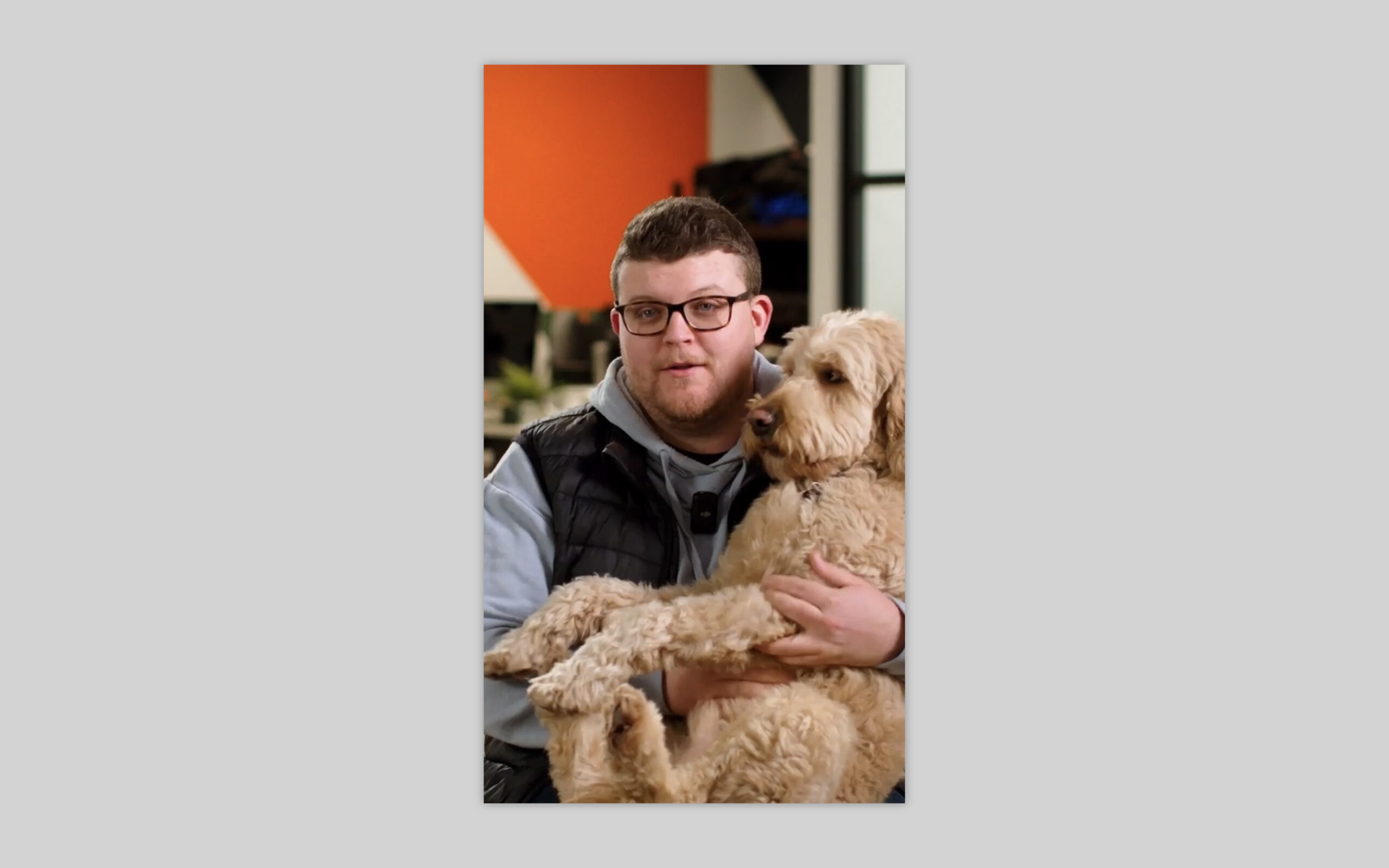Why getting your team on camera will boost your video marketing efforts
By: Kaleigh Bulford
April 3, 2024 | Reading Time: 9 mins
Despite many of us spending the last 4 years in a lot more video calls, a lot of us are still not comfortable on camera. While video calls have become the norm, putting your whole self in front of a camera to produce a content piece intended to be distributed beyond your company’s figurative walls is a whole different ballgame.
But we all know video marketing is important and there are a plethora of stats that prove it. It’s one of the top marketing trends for 2024 with many marketers planning to invest more into creating videos than in previous years. But it can also feel like a tough tactic to leverage. The barrier to entry is higher. It’s intimidating. It can make people feel vulnerable and exposed. And because of that, your team might not be comfortable getting on camera.
So, if you’re amongst the 68% of marketers who don’t use video and plan to start using video in 2024, you’ve come to the right place. Especially if you need help getting your team on camera and feelin’ comfy.
Why video marketing? Why are videos better than photos or text?
Enables richer storytelling
By combining visual elements, motion, sound, and sometimes text, you engage multiple senses and can tell a story in a way that photos and text alone cannot. This multidimensional approach makes it easier to convey complex messages, evoke emotions, and create a stronger connection with the audience. Videos allow brands to showcase their personality and values more vividly than static images or text. Through the tone of voice, music, visual style, and storytelling, companies can create a more personal and emotional connection with their audience.
Drives higher engagement
Videos tend to capture and retain attention longer than static images or text. The dynamic nature of video content can engage viewers, encouraging them to watch through to the end and even share the content with others, increasing its reach. Not only are users more engaged but they also are more likely to remember video content than information delivered through text or photos. The combination of visual and auditory elements makes it easier for people to recall video messages, which is beneficial for brand recognition and recall.
It’s how most people now prefer to consume content
More than 65% of all internet traffic is video, according to a 2023 study by Sandvine. And it’s not just for entertainment. When asked how they’d like to learn about a product or service, 44% of respondents in a Wyzowl survey said they’d most like to watch a short video and a whopping 91% of people have watched an explainer video to learn more about a product or service.
Access more distribution channels and increase visibility
Videos are suitable for various platforms and purposes from educational, entertainment, promotional to testimonials. This adaptability makes video a powerful tool for marketing across different channels, from social media to email campaigns.
After Google Search, YouTube and TikTok are some of the next most popular search engines (especially amongst the younger generations)—and they’re video-based. Having content in video format gives you new places to rank and get your content discovered beyond the ultra-competitive Google search results. Videos (especially videos uploaded to YouTube) can also top the Google SERPs making it easier to rank #1 for some queries. 
And most of the biggest social media platforms’ algorithms prioritize video content, meaning videos are more likely to appear in feeds and attract organic engagement than posts with only photos or text.
Why getting your team on camera is important
But this isn’t a blog about just doing video marketing, it’s about why your team should be in the videos. Getting your team on camera enables you to more easily create videos that authentically showcase your team, their expertise, and your company culture. It’s a powerful way to connect with your audience, attract potential employees, and differentiate your brand. Some examples of videos you could create are:
- Culture videos like ‘A day in the life”, ‘Meet the team’ or team member introduction videos, or of company events
- Employee testimonial videos
- Case studies showcasing your team’s problem-solving capabilities and expertise
- Expertise or educational videos for marketing or onboarding clients
- Behind-the-scenes (BTS) videos
- Webinars or product demos/walkthroughs
- Explainer videos
If you want proof that putting your team (or yourself) out there on video is effective, look no further than the biggest YouTubers in the world, such as Mr. Beast, PewDiePie, and Markiplier. All three boast tens to hundreds of millions of subscribers and have become household names (assuming your household includes Gen Y or younger). These YouTubers put themselves in the spotlight and have grown personal empires that transcend YouTube because people love them—not just the specific content they produce.
Although I couldn’t find any research or statistics specifically proving that including a person’s face (or using a face cam as streamers refer to it) helps grow your audience faster or bigger, it seems to be simply an accepted fact that it helps you better connect with the audience. While not directly related to video, in a study on print advertising, 91% of ads featuring faces outperformed those that didn’t. Across different mediums, we see success in showing faces.
“Know, like, trust” is easier to build when you’re on camera
The ‘know, like, trust’ (KLT) factor is the concept that people are more likely to do business with someone they know, like, and trust.
Getting on camera can help with all three components, but holds a particular advantage over other mediums in building likeability. On camera, your audience can connect with you as a real person. They see your face, putting a face to your name. They see your body language, your mannerisms, your style—and a million other things that are harder to convey with a text or photo—which helps your audience relate to you and like you.
Cut through the AI noise
Getting on camera is more important than ever in the tidal wave of AI-generated content. With people churning out a million more blog posts programmatically by leveraging AI, the internet has never been more noisy. But video is not so easy to pump out quickly making it stand out and be seen as more authentic. AI is getting closer (Sora is new to the scene and there are also popular virtual influencers) but it still can’t come close to replicating a real human telling a story.

Humanize your company
Authentically showing your company culture can help attract top talent and reduce turnover. While adding photos of your team can definitely help humanize your website or other marketing materials, a great company culture video can capture so much more. Imagine the difference between an employee testimonial that says in bold text ‘I love working at Widget Factory’ versus a video testimonial of them actually saying it. You’d probably believe the video more, right?
Last holiday season, we created a video wishing our clients well instead of creating a static e-card or image-based post. It felt a lot more personal and showcased our employees’ personalities and smiling faces! On top of that, the video was visually distinct from other holiday messages being posted online which tend to use the same holiday design elements and colours.
A first exercise in getting our team comfortable on camera
I hate being on camera, and I’m not the only one on the team that feels that way. Whether it’s because you hate seeing yourself on camera, you think your voice sounds weird, or you’re afraid you’re going to say something that makes you sound unknowledgeable (or worse, not having any idea what to say at all), we all have our insecurities and they’re more exposed on camera than in any other medium.
We decided to start with one low-stakes project. So, here’s how our journey of how building our video culture started.
Pick a topic that’s lighthearted and not intimidating.
A culture-oriented video can be a great option. You don’t want to bite off more than you can chew at the start. Remember, it’s about dipping your toes in and building momentum. For example, live interviewing on the streets or a video requiring your team to appear like a professional host may make things harder. Instead, start with a fun topic that doesn’t require people to prepare so that they don’t get in their heads about what they’re going to say and worry they’ll say something unpolished or inarticulate. This also prevents people from rehearsing their answers which can make them get hung up on memorizing all their lines and coming off as robotic or unnatural.
Choose a comfortable, familiar location
After considering a few locations for our shoot, we ultimately decided on our office. Some reasons were practical (we don’t need permission from anyone), but most importantly, we wanted our team to be as comfortable as possible. When we considered other, perhaps more aesthetic or more suitable locations, we felt the trade-offs such as having someone travel to an unfamiliar location alone or having curious onlookers stop and watch or be distracting would just give our team more things to feel anxious about. And hey, our office isn’t too dang bad lookin’ either.
Within our office we were also strategic—we wanted to be far enough away from others that it didn’t feel like you had a huge audience watching and listening, but close enough that it didn’t feel like you were alone on a stage doing a monologue to a camera.
And the bonus? The other Stryvers waiting for their turn could see the person doing their shoot was laughing and having fun.

Let people come as they are
To get started you want to make people as comfortable as possible. Don’t get overly prescriptive with outfits. If your team is used to athleisure (guilty as charged) and suddenly has to put on tailored button-down shirts, they’ll likely spend the whole time fidgeting and adjusting it or looking uncomfortable.
Your employees are already living breathing conduits of your brand. Their unique personalities should shine through. There’s a big level of psychological safety at play here. If people feel too heavily policed, judged or overly-directed to the point that it’s unnatural then it can create a feeling of discomfort that translates into the video. So, let your team be themselves!
Show the finished video(s) to the entire team
This is a critical step! You can’t just film and edit something and then let it wither on the vine. It needs to be shared with the team to reap the rewards of doing the exercise. And not just the participants, but the whole team—unless you’re like, a megacorp with thousands of employees…then maybe just the people you want to include in future videos.
After our team saw the final products, there was much more enthusiasm, with people expressing the desire to join future video projects. The end product and how they’d be portrayed was more clear, dispelling some of the fears our team had.
I’m confident that next time I ask for volunteers to be in a video, I won’t have to beg, bribe, or beat a single team member!
Practice, practice, practice
I’m sorry to say that you won’t become a pro after reading this blog. You’ll learn a lot going through the process once, but to truly get your team comfortable (and awesome) on camera, you’ll need to keep practicing. Most of the tips about getting better at being on camera are about being in front of a camera more often. The more you do it, the easier (and better) it gets.
Partner with a video production agency to jumpstart your skills
If your team is brand new to video, partnering with an agency might be the best way to get started. An agency can help coach you through the process and shortcut your learning time. We really appreciated having Oak + Rumble behind the cameras to throw some jokes in and make it feel more like a conversation than a performance, and then later edit the videos in a flattering and professional way. We agree with the 42% of marketers surveyed who say creating video content through an outside agency has resulted in better videos.
Thanks for Oak + Rumble’s help getting us comfy on camera and producing these fun clips throughout this blog!
Not shown: Our early attempts at Gary V style vlogs of our team meetings.
Just start. All you need is a smartphone.
Even if you aren’t in a position to hire an agency, you shouldn’t let that hold you back from getting started. It’s easier than ever to produce high-quality videos with just the phone in your pocket and some video editing software.
Video marketing does not have to be high production to succeed. In fact, for some channels, people actually prefer videos that are less polished over high-production value because they feel more authentic. Don’t let concerns about production quality be your excuse not to start!








